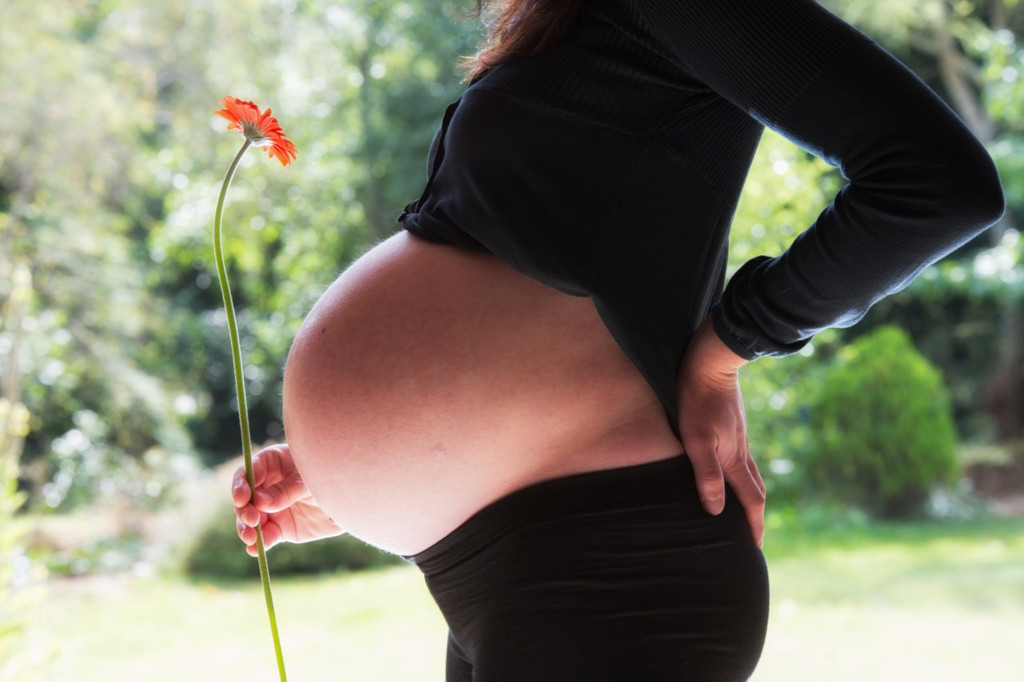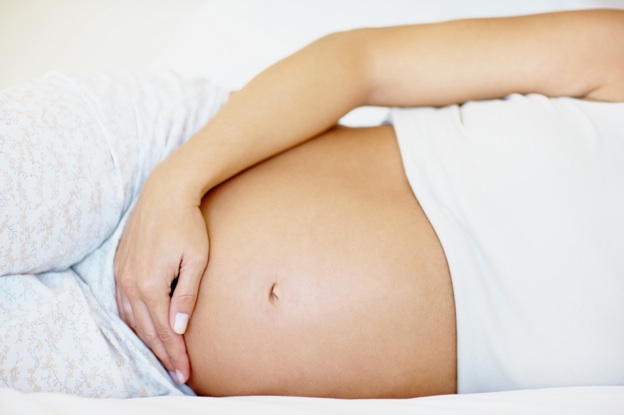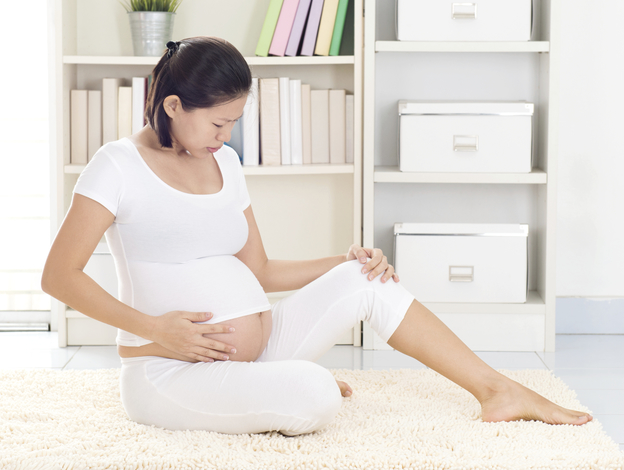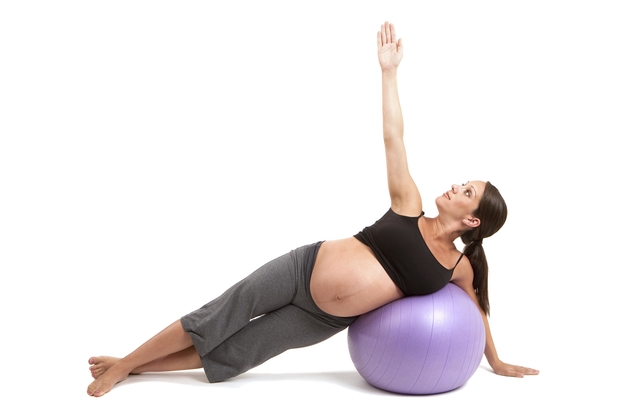SingaporeMotherhood | Pregnancy
November 2019
Common Pregnancy Aches and Pains You Should Not Ignore

Being pregnant is a joyful experience for most women but it also comes with certain levels of discomfort, as your body adjusts to the changes you’re going through. And, as your uterus — and, thus, your belly — expands as your foetus grows, it’s ‘normal’ to get pregnancy aches and pains in certain areas of your body, such as your back, abdomen and legs.
“Growing a brand new human in your body can be hard. Even in the most uneventful pregnancy, one may encounter various aches and pains,” says Dr Clara Ong, obstetrician and gynaecologist at Gleneagles Hospital.
Dr Ong takes us through some common pregnancy aches and pains you might encounter and what you can do to alleviate the pain:
Back Pain

The most common complaint when it comes to pregnancy aches and pains, more than 60 per cent of pregnant women experience lower back pain. This usually starts in the latter half of your pregnancy and resolves after delivery in 80 to 95 per cent of women.
Your growing uterus changes your centre of gravity and puts a strain on your back. The loosening and weakening of your abdominal muscles further impede neutral posture. Pregnancy hormones also loosen your joints and relax the ligaments at your spine, contributing to the back pain.
I suffered from lower back pains often and I know a lot of my friends did too although my situation wasn’t as bad as some of them. I made sure I had good support when sitting and sleeping and didn’t stay in one position for too long.
Ling Tan, 34-year-old stay-at-home mum to two kids aged three years and eight months
What you can do:
- Wear low-heeled (but not flat) shoes with good arch support.
- Get help when lifting heavy objects.
- Place a board between the mattress and box spring if your bed is too soft.
- Squat with your knees bent and keep the back straight when lifting.
- Sit in chairs with good back support, or use a small pillow to provide support.
- Sleep on your left side with pillows between the knees for support.
- Apply heat, cold, or massage to the painful area.
- If it is necessary to stand or sit for a prolonged period, taking breaks and placing one foot on a low stool relieves pressure on the lower back.
- Perform back exercises such as pelvic tilts or arm and leg lifts after discussion with your doctor.
Seek help immediately when:
- You experience weakness in your legs or lose sensation in your buttocks, groin or genital area.
- You’re unable to control your bowel movement or have urinary incontinence.
- You have increased pain with coughing, sneezing or straining.
- Your back pain is accompanied by fever or a burning sensation when you pass urine.
- Your back pain is severe and gets progressively worse.
- You have vaginal bleeding.
(See also: 5 Useful Pregnancy Splurges That Are Totally Worth Spending On)
Pelvic Pain

Pelvic pain occurs in 20 per cent of women, usually starting late in the first trimester. It can occur anywhere from the top of your hip bones down to the fold of your buttocks, either in the front or back. The pain usually resolves in majority of women about a month postpartum and 80 per cent fully recover within six months of delivery.
Pelvic pain is usually caused when pregnancy hormones relax the ligaments holding the pelvic bones together, thus making it easier for your baby’s head to pass through the birth canal during delivery. Weight gain and the change in your centre of gravity during pregnancy can also contribute to pelvic pain.
I suffered major hip and buttock pain with both my pregnancies due to my work. In my 34th week when I was expecting my second girl, I over-strained it at one point after standing for too long. I was in so much pain that I was limping and couldn’t even turn myself over in bed! Seeing a chiropractor helped a little, as did as much bed rest as possible.
Li Ruifang, 35-year-old hawker and mother to four-year-old Kyra and one-month-old Ella
What you can do:
- Wear pregnancy girdles, bands and belts.
- Pillows that support your belly and hips can ease the strain on your pelvic ligaments.
- Work with a physical therapist.
- Acupuncture has been used but with inconsistent results.
- Pain relievers such as acetaminophen is safe in pregnancy.
- Avoid activities such as heavy lifting, standing or walking for prolonged periods.
- When getting out of bed, try rolling to your side instead of sitting straight up.
- Practise good posture.
- Apply ice or heat to painful areas. Do not use heat in the front where your uterus is.
Seek help immediately when:
- You have vaginal bleeding or leaking watery fluid.
- Your pain gets progressively worse.
(See also: How 3rd-generation 545 Whampoa Prawn Noodles Hawker Mama Makes Life a Delicious Balancing Act)
Wrist Pain

Carpal tunnel syndrome is a common cause of hand and wrist pain in pregnancy. It can occur in up to 30 per cent of pregnant women. The symptoms are typically worse at night and more common in the latter half of pregnancy. Often, they resolve weeks to months after delivery. However, symptoms can be prolonged for several months in women who are breastfeeding.
It is caused by pregnancy-related fluid retention leading to compression of the nerve in the carpal tunnel. Hormonal changes affecting the musculoskeletal system may also play a role.
What you can do:
- Identify and limit activities that tend to aggravate the syndrome, such as keyboard typing.
- Hand and wrist exercises may relieve your symptoms.
- Make adjustments to your workstation such as adjusting the height of your desk chair so your wrists don’t bend downward as you type.
- Take short breaks from repetitive work to move your arms and stretch your hands.
- Wearing wrist splints or hand brace to stabilise the wrist in a neutral position.
Seek help immediately when:
- Your symptoms are worsening, for example, if you have constant muscle weakness or loss of sensation in your hands.
(See also: Breastfeeding Hacks: Ease those Aches and Pains from Nursing your Newborn)
Leg Cramps

Leg cramps are common in the latter half of pregnancy. They are generally experienced in the calves at night. The exact cause is unknown.
I had leg cramps and, like many other women, swollen feet and ankles when I neared my due date. Luckily it was a mild case and I soothed the aches by massaging the areas and soaking my feet in warm water.
Dawn N, 38-year-old account manager, mother of a six-year-old
What you can do:
- You can prevent leg cramps by doing stretches, staying physically active, wearing comfortable shoes and drinking plenty of fluids.
- If leg cramps wake you up from bed, stretch your calf muscles immediately by straightening your leg, heel first and gently flexing your toes back toward your shins. Do not point your toes while stretching.
- Massaging your calves or having a warm bath or shower may help.
- Research has shown a possible benefit to magnesium supplements. Always check with your doctor before taking any kind of supplement during pregnancy.
(See also: All you need to know about Deep Vein Thrombosis (DVT) during Pregnancy)
Can Physiotherapy Help?

“Physiotherapy sessions are primarily targeted at improving and resolving movement-related disorders, such as muscular and joint pains,” says Sylvia Ho, senior principal physiotherapist at Core Concepts. She advises pregnant women to seek physiotherapy treatment during their first trimester with the approval of their gynaecologist, in order to strengthen the targeted muscles early on.
“Physiotherapy can be an effective way of keeping pregnancy aches and pains to a minimum, and improve mobility, hence contributing to a smoother pregnancy and labour,” she explains.
However, it’s best to consult your ob-gyn first, to rule out medical reasons for your pregnancy aches and pains. Your doctor may refer you to an orthopaedic doctor for further investigations, or directly to a physiotherapist or physiotherapy clinic specialising in pregnancy-related treatments.
(See also: Pregnancy Week-by-Week Guide – Everything You Need to Know as Your Baby Bump Grows)
Before treatment begins, a thorough physical evaluation should be conducted to gain an understanding of potential risks and baseline norms specific to each pregnant woman. Exercise, as prescribed by an experienced physiotherapist, can:
- strengthen muscles
- train breathing control
- aid in faster recovery
- help combat pregnancy-related depression by improving body image and increasing self-esteem
“All physiotherapy treatments are different, and are customised to the person being treated. During pregnancy, physiotherapists will devise individual treatment and exercise plans more cautiously, to accommodate to each pregnant woman’s requirements and restrictions,” Sylvia adds. Other recommendations commonly given by physiotherapists include:
- pain management
- techniques to aid joint and soft tissue flexibility
- stress relief and relaxation training
- recommendations for sleeping and birth positions
- posture correction and ergonomic advice
- postpartum rehabilitation
- strengthening of muscle groups
(See also: Pregnancy Self-Care, Trimester-by-trimester)
Header image: Source
All content from this article, including images, cannot be reproduced without credits or written permission from SingaporeMotherhood.
Follow us on Facebook, Instagram, and Telegram for the latest article and promotion updates.





